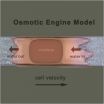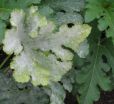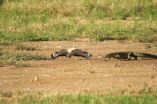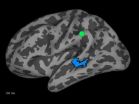(Press-News.org) ROSEMONT, Ill.—Baseball season is back and so are the injuries. But, elbow injuries, once seen as a problem for professional athletes, are becoming more prevalent among high school and middle school athletes due to increased play and competition at the youth level. Repetitive stress to a pitcher's ulnar collateral ligament (UCL)—an important stabilizing ligament of the elbow joint—can lead to pain and eventually to the inability to pitch and throw.
According to a literature review in the May 2014 issue of the Journal of the American Academy of Orthopaedic Surgeons (JAAOS), overuse is the main cause of UCL injury. Year-round sport—with the addition of numerous leagues, travel teams, showcase events and other opportunities for youth to play baseball outside of their school—has contributed to a 10-fold increase of UCL reconstruction in the last decade.
The USA Baseball Medical and Safety Advisory Committee discourages young athletes from participating in multiple teams, especially during the same season, to help prevent overuse injuries.
"Despite all our efforts to educate youth athletes, parents and coaches, the trend of UCL injuries continues to be on the rise," says lead author Jeremy Bruce, MD, an orthopaedic surgeon specializing in sports medicine and a clinical instructor at The University of Tennessee's College of Medicine Chattanooga. "The success we've had in improving our techniques and outcomes with UCL reconstruction may be adding to our problems in preventing the injuries. The belief that some have about UCL reconstruction being a safe, simple way to improve one's ability to throw is a great misconception that may be adding to our epidemic."
UCL Injury: Prevention is Key
Throwing with fatigue is the main risk factor for overuse injury, whether it is event fatigue (too many pitches in a game), season fatigue (too many pitches in one season) or year-round fatigue (not taking the appropriate 3-4 months off from throwing). In fact, throwing athletes with fatigue are 36 times more likely to suffer shoulder and elbow injuries.
Understanding the risk factors with fatigue and overuse can help prevent UCL injuries:
Follow recommended guidelines from the American Sports Medicine Institute (ASMI) or STOP Sports Injuries on pitch count, avoid playing on multiple teams, get appropriate rest and follow proper mechanics.
Proper throwing mechanics are vital as well as the encouragement to play a variety of sports instead of focusing on one sport year-round. The throwing athlete needs at least three months of rest a year, which can occur by playing other non-throwing sports such as soccer.
Participate in core and shoulder/scapula stabilizer strengthening programs such as "Thrower's Ten" exercises. If the program is guided by a professional, it can help address motion/strength deficits that could become problematic.
Recognize early symptoms and begin an early therapy program to help prevent unnecessary surgery. If surgery is necessary, ensure all parties—the coach, parent and patient—understand there are no short-cuts to get back on the pitching mound earlier. Only time and rehabilitation will prepare the athlete for return to competition.
After the Injury
A trial of nonsurgical measures (e.g., rest followed by rehabilitation) is appropriate, especially for the young athlete with an acute injury or partial UCL tear.
Approximately 10 percent of all major league pitchers have undergone UCL reconstruction and that number is likely to rise. Many of those athletes return to sport because of dedicated therapy and strengthening after the procedure. UCL reconstruction—as with any surgery—is not without risk. While most pitchers are able to return to MLB, and some with a significant improvement in pitching performance, not all athletes return to the same high level of throwing.
According to Dr. Bruce, adolescent athletes in the 14 to 16 year old age group have a lower return to sport after UCL reconstruction surgery than the 18 and over age group, 75 percent versus 85 percent, respectively. It is unknown "whether it is the lack of appropriate post-injury rehabilitation or the loss of interest after having to take a year away from the sport" contributes to the lower percentage of return. Additionally, UCL reconstruction is an adult surgery and more information on the long-term survivorship of the procedure is needed if offered to the adolescent age group.
INFORMATION:
May 2014 Full JAAOS Table of Contents
Traumatic Atlanto-Occipital Dislocation in Children
Anterior Glenohumeral Instability: A Pathology-Based Surgical Management Strategy
Unicameral Bone Cysts: General Characteristics and Management Controversies
Combined Acetabulum and Pelvic Ring Injuries
Ulnar Collateral Ligament Injuries in the Throwing Athlete
Occupational Hazards for Pregnant or Lactating Women in the Orthopaedic Operating Room
Anterior Ankle Impingement: Diagnosis and Treatment
For more AAOS news, visit the News Bureau
Follow AAOS on Twitter
Follow AAOS on Facebook
Google+
Orthopaedic surgeons restore mobility and reduce pain; they help people get back to work and to independent, productive lives. Visit ANationInMotion.org to read successful orthopaedic stories.
Throwing injuries no longer just for the pros
Year-round play contributes to 10-fold increase of ulnar collateral ligament reconstruction among youth
2014-04-30
ELSE PRESS RELEASES FROM THIS DATE:
Research finds a way to protect crops from pests and disease
2014-04-30
A team of international researchers has uncovered a mechanism by which plants are able to better defend themselves against disease-causing pathogens.
The work, led by Dr Jurriaan Ton and Dr Estrella Luna at the University of Sheffield, has identified the key receptor binding a chemical called BABA (β-aminobutyric acid) which is boosting plant immunity.
BABA has long been known for its protective effects against devastating plant diseases, such as potato blight, but has so far not been used widely in crop protection because of undesirable side effects.
"We have ...
Robots may need to include parental controls
2014-04-30
Older adults' fears that companion robots will negatively affect young people may create design challenges for developers hoping to build robots for older users, according to Penn State researchers.
Companion robots provide emotional support for users and interact with them as they, for example, play a game, or watch a movie.
Older adults reported in a study that while they were not likely to become physically and emotionally dependent on robots, they worried that young people might become too dependent on them, said T. Franklin Waddell, a doctoral candidate in mass ...
Water-based 'engine' propels tumor cells through tight spaces in the body
2014-04-30
Johns Hopkins researchers have discovered a new mechanism that explains how cancer cells spread through extremely narrow three-dimensional spaces in the body by using a propulsion system based on water and charged particles.
The finding, reported in the April 24 issue of the journal Cell, uncovers a novel method the deadly cells use to migrate through a cancer patient's body. The discovery may lead to new treatments that help keep the disease in check. The work also points to the growing importance of studying how cells behave in three dimensions, not just atop flat two-dimensional ...
Frog eggs Help MU researchers find new information on grapevine disease
2014-04-30
COLUMBIA, Mo. – Vitis vinifera are common grapevines and are the world's favorite wine-producing varietal. However, research has shown that grapevines are susceptible to powdery mildew, a plant disease, which contributes to significant crop loss for most commercial wine varietals that are cultivated each year. Now, researchers at the University of Missouri have used frog eggs to determine the cause of this disease, and have found that a specific gene in the varietal Cabernet Sauvingon, contributes to its susceptibility.
"Powdery mildew disease causes the leaves of the ...
Predators predict longevity of birds
2014-04-30
This news release is available in German. Ageing inevitably occurs both in humans and in other animals. However, life-span varies widely across species. Researchers of the Max Planck Institute for Ornithology in Seewiesen have now found a possible general mechanism explaining differences in longevity. They investigated life history data of nearly 1400 bird species and found that avian life span varies considerably across the entire Earth, and that much of this variation can be explained by the species' body mass and clutch size and by the local diversity of predator ...
Your stress is my stress
2014-04-30
This news release is available in German. Stress is contagious. Observing another person in a stressful situation can be enough to make our own bodies release the stress hormone cortisol. This is the conclusion reached by scientists involved in a large-scale cooperation project between the departments of Tania Singer at the Max Planck Institute for Cognitive and Brain Sciences in Leipzig and Clemens Kirschbaum at the Technische Universität Dresden. Empathic stress arose primarily when the observer and stressed individual were partners in a couple relationship and the ...
A fattening gene
2014-04-30
This news release is available in German. The long-term consumption of too much high-energy and high-fat food leads to overweight. Behind this trivial statement lies the extremely complex regulation of lipid metabolism. Together with colleagues from Japan, scientists from the Max Planck Institute for Heart and Lung Research in Bad Nauheim have now discovered that the Sirt7 gene plays a central role in energy metabolism. Despite consuming high-fat food, genetically modified mice that lack the gene maintain their normal weight.
Food was not always available to such ...
In recognizing speech sounds, the brain does not work the way a computer does
2014-04-30
VIDEO:
Patterns of activation induced by listening to human speech move across brain hemispheres over a period of 300 milliseconds in these images, produced by combining data from EEG, MEG and...
Click here for more information.
How does the brain decide whether or not something is correct? When it comes to the processing of spoken language – particularly whether or not certain sound combinations are allowed in a language – the common theory has been that the brain applies a ...
Social media users need help to adjust to interface changes
2014-04-30
Social media companies that give users a greater sense of control can ease them into interface changes, as well as curb defections to competitors, according to researchers.
"Several studies have looked into how social media companies have failed," said Pamela Wisniewski, a post-doctoral scholar in information sciences and technology, Penn State. "What we need to think about is how social media companies can be more adaptive and how they can improve the longevity of their sites.
In a study of the reaction to the introduction of Facebook's Timeline interface between 2011 ...
Parents just as likely to use cell phones while driving, putting child passengers at risk
2014-04-30
Ann Arbor, Mich. — Despite their precious cargo, parents are no less likely to engage in driving distractions like cell phone use than drivers from the general population, according to a new University of Michigan study published in
Academic Pediatrics.
The study found that 90 percent of parent drivers said they engaged in at least one of the 10 distractions examined in the study while their child was a passenger and the vehicle was moving, says lead author Michelle L. Macy, M.D., M.S., an emergency medicine physician at the University of Michigan's C.S. Mott Children's ...
LAST 30 PRESS RELEASES:
Tracing the quick synthesis of an industrially important catalyst
New software sheds light on cancer’s hidden genetic networks
UT Health San Antonio awarded $3 million in CPRIT grants to bolster cancer research and prevention efforts in South Texas
Third symposium spotlights global challenge of new contaminants in China’s fight against pollution
From straw to soil harmony: International team reveals how biochar supercharges carbon-smart farming
Myeloma: How AI is redrawing the map of cancer care
Manhattan E. Charurat, Ph.D., MHS invested as the Homer and Martha Gudelsky Distinguished Professor in Medicine at the University of Maryland School of Medicine
Insilico Medicine’s Pharma.AI Q4 Winter Launch Recap: Revolutionizing drug discovery with cutting-edge AI innovations, accelerating the path to pharmaceutical superintelligence
Nanoplastics have diet-dependent impacts on digestive system health
Brain neuron death occurs throughout life and increases with age, a natural human protein drug may halt neuron death in Alzheimer’s disease
SPIE and CLP announce the recipients of the 2025 Advanced Photonics Young Innovator Award
Lessons from the Caldor Fire’s Christmas Valley ‘Miracle’
Ant societies rose by trading individual protection for collective power
Research reveals how ancient viral DNA shapes early embryonic development
A molecular gatekeeper that controls protein synthesis
New ‘cloaking device’ concept to shield sensitive tech from magnetic fields
Researchers show impact of mountain building and climate change on alpine biodiversity
Study models the transition from Neanderthals to modern humans in Europe
University of Phoenix College of Doctoral Studies releases white paper on AI-driven skilling to reduce burnout and restore worker autonomy
AIs fail at the game of visual “telephone”
The levers for a sustainable food system
Potential changes in US homelessness by ending federal support for housing first programs
Vulnerability of large language models to prompt injection when providing medical advice
Researchers develop new system for high-energy-density, long-life, multi-electron transfer bromine-based flow batteries
Ending federal support for housing first programs could increase U.S. homelessness by 5% in one year, new JAMA study finds
New research uncovers molecular ‘safety switch’ shielding cancers from immune attack
Bacteria resisting viral infection can still sink carbon to ocean floor
Younger biological age may increase depression risk in older women during COVID-19
Bharat Innovates 2026 National Basecamp Showcases India’s Most Promising Deep-Tech Ventures
Here’s what determines whether your income level rises or falls
[Press-News.org] Throwing injuries no longer just for the prosYear-round play contributes to 10-fold increase of ulnar collateral ligament reconstruction among youth




